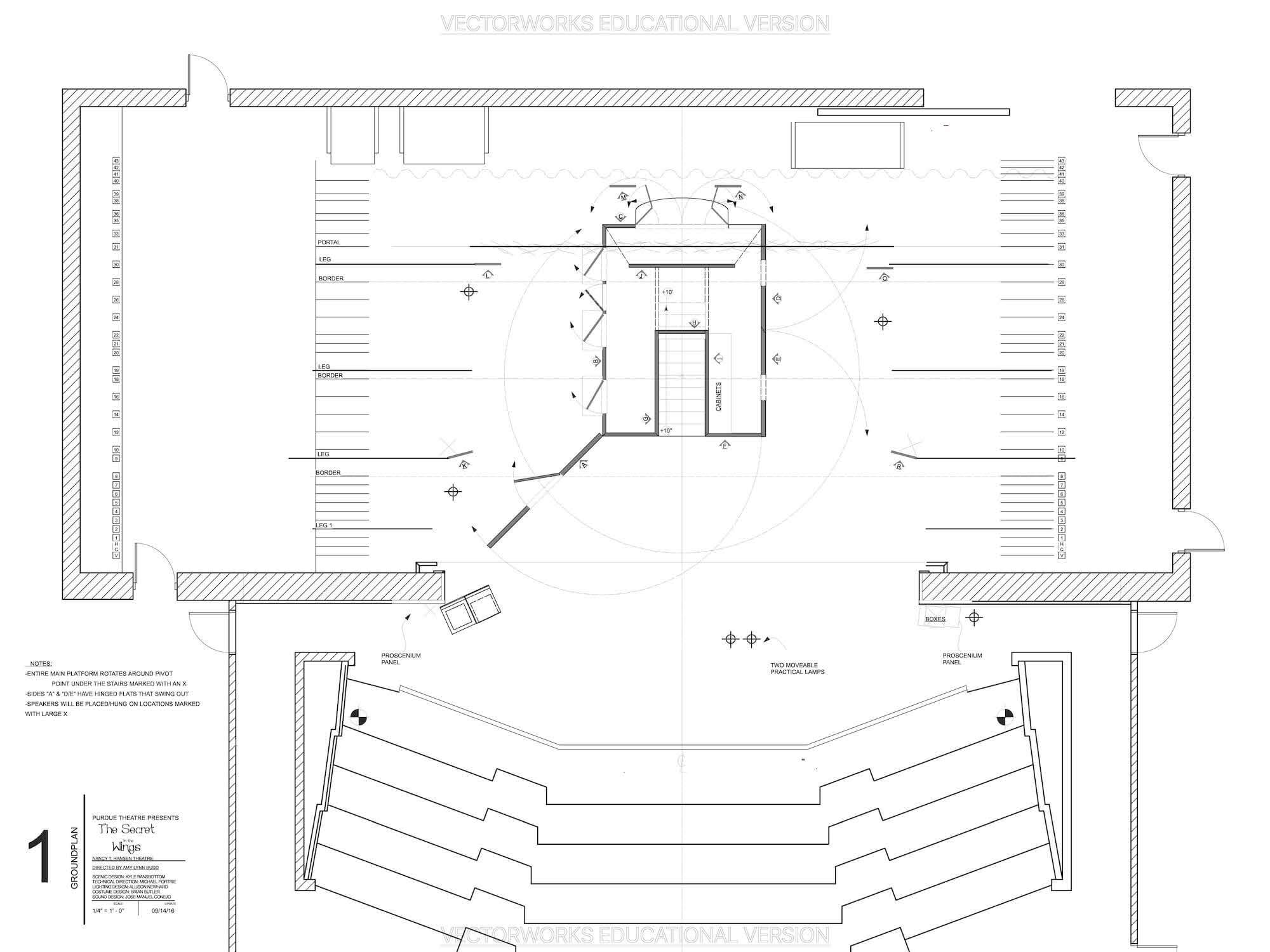Client
West Lafayette, Indiana
Cast
Technical Direction: Michael Portrie
Lighting Design: Allison Newhard
Costume Design: Brian Butler
Sound Design: José Manuel Conejo
Uniquely structured, The Secret in the Wings tells the first half of several fairy before completing them in reverse order.
Idiosyncratic, highly theatrical, sincere, and outright silly at times, it muses on the stories that we tell ourselves. Designing scenery for The Secret in the Wings served as my terminal project in my MFA at Purdue. I sought to give the design a since of wonder. I wanted the audience to feel a childlike delight as a magic trick played out before them.
The scenery for The Secret in the Wings consisted primarily of a wagon designed to resemble a traveling caravan. My idea being that the cast would act as an acting troupe who used this wagon to perform their stories. The wagon would literally spin onstage, opening up and unfolding to reveal the name of a new story. From a practical sense, I wanted to establish the name of each fairy tale as they performed it, but also create a sense of curiosity, just like title in a storybook. This storybook motif was established in the very first motion. The most ‘realistic’ aspect of the scenery would close like the pages of a book to form the wagon.
Initial Sketches
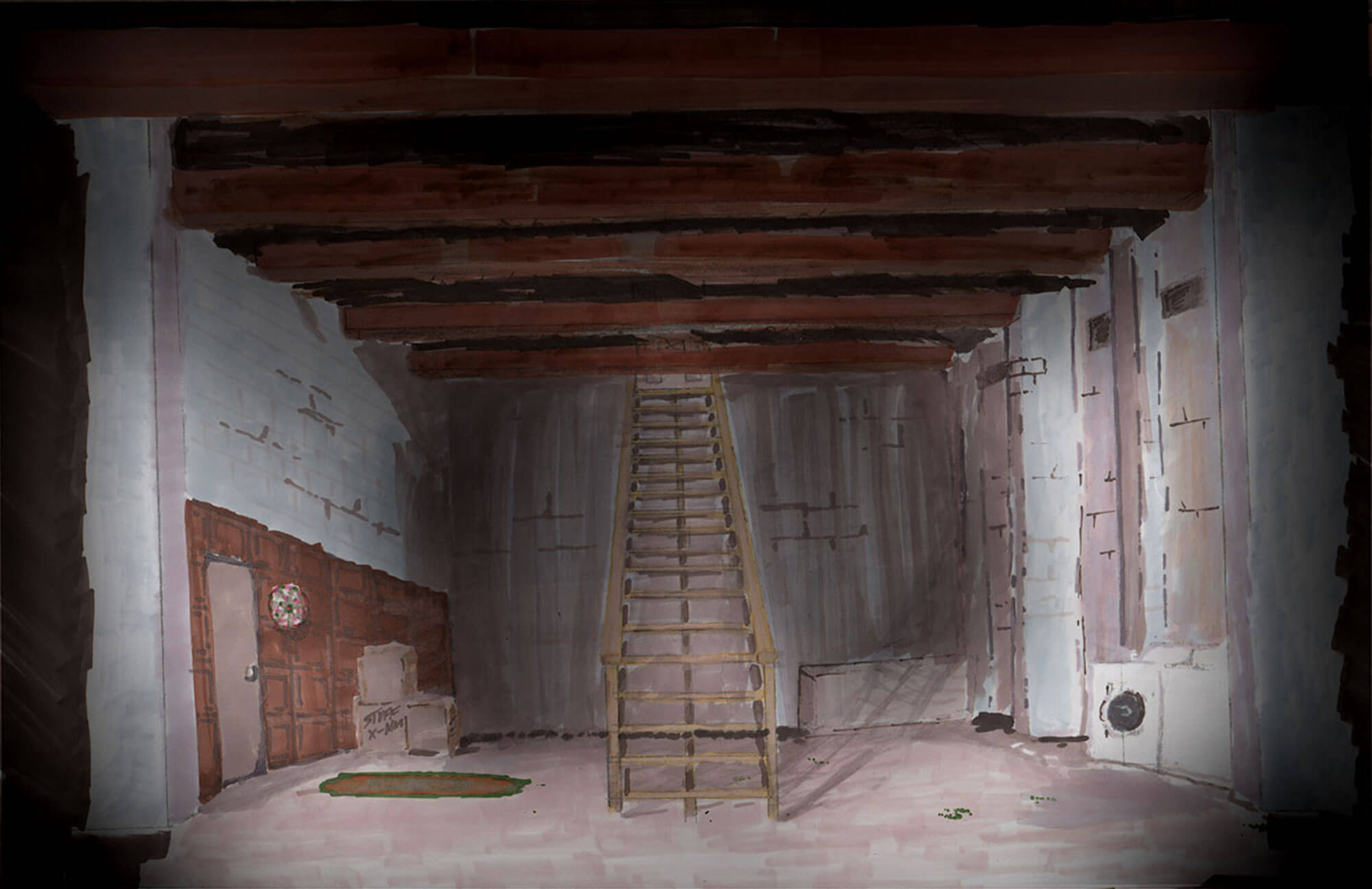
I was struck by a conversation with the composer Jing Zhao and director, Amy Lynn Budd. Jing said that he felt the play was like a music box. Coincidentally, I had seen a music video made by the band Wintergatan titled Marble Machine. The idea of a machine that was built to play a song inspired me to design a machine built to tell a story.
The location, as written in the script is both a basement and a forest. My first approach leaned heavily on the idea of the basement that would become more and more of a forest as the play progressed. I produced a rendering of a vast basement with the idea being that storybook characters would enter through bizarre locations. I was particularly interested in people entering from the washing machine.
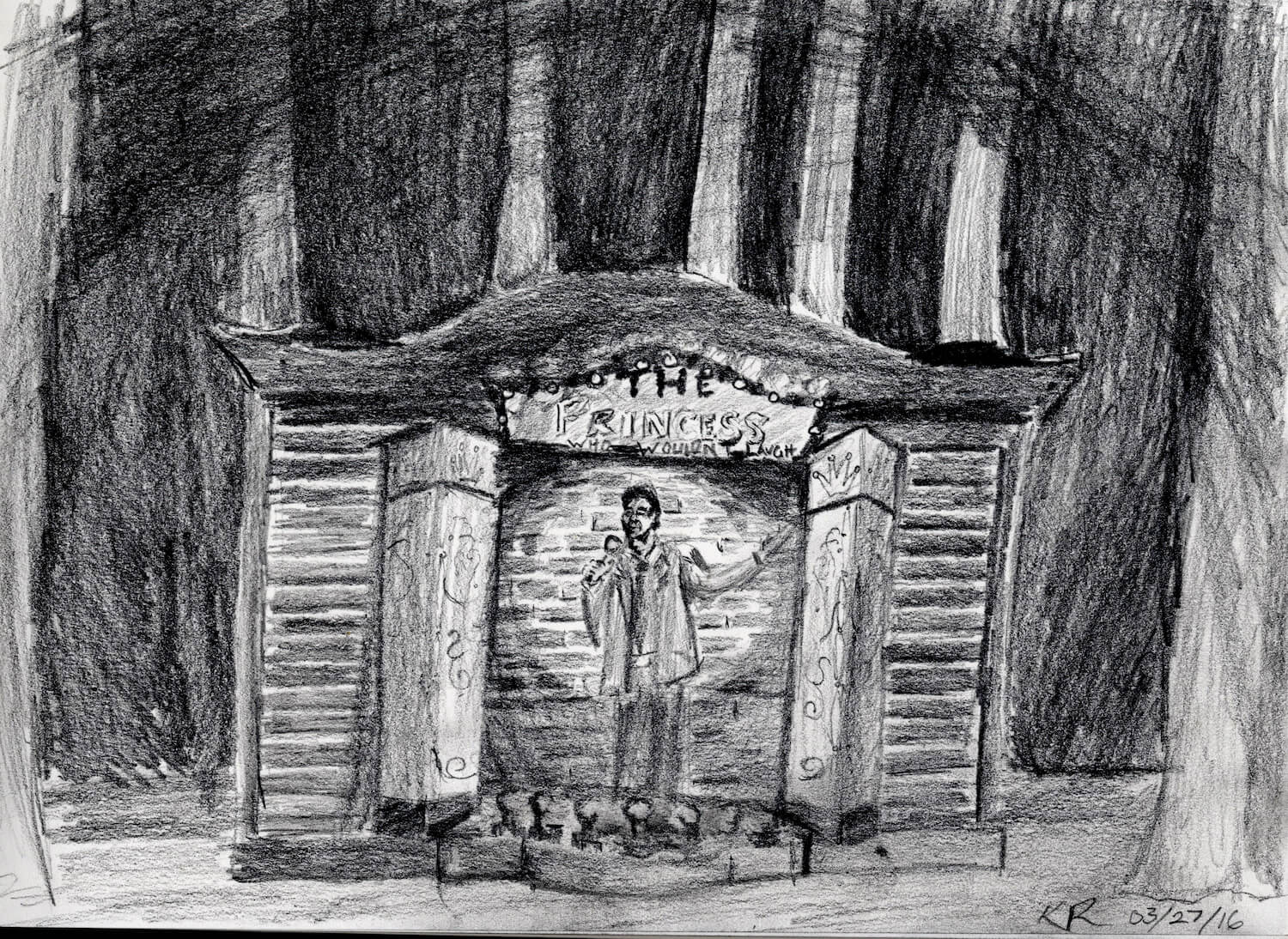
Sketch of the Princess Who Wouldn’t Laugh
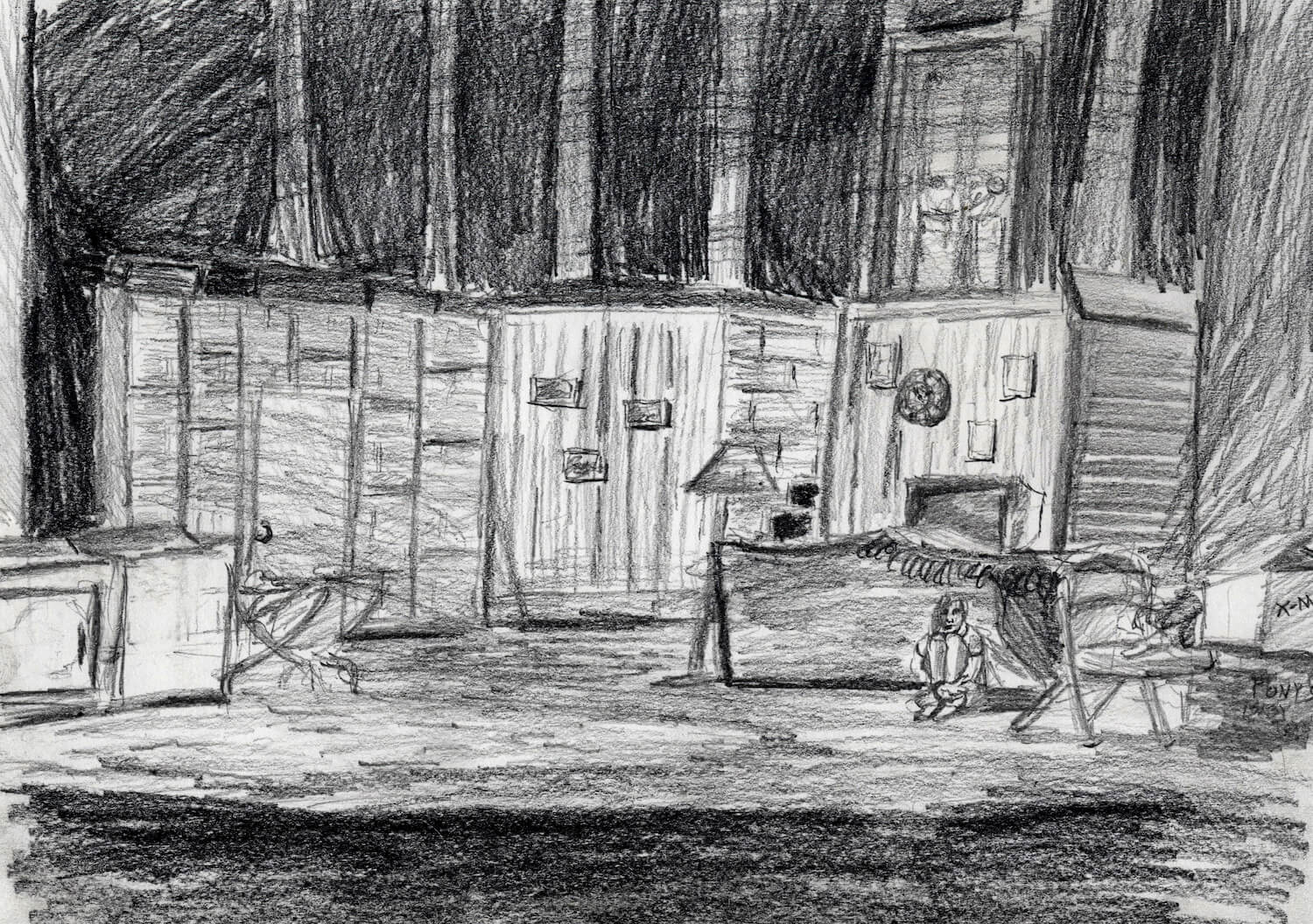
Sketch of “Into the Forest”
This sketch, showing a standup comedian on the back of a wagon in a forest, was my first attempt at explaining my strange concept. I wanted to lean into the childlike, dream logic, and emphasize iconography and imagination With this sketch, I was expounding on my idea of a wagon in the forest. I wanted to establish a fairly typical 90’s basement. My first pass included many more props in furniture elements (cut for actor simplicity). I loved the idea of Heidi hiding in a blanket fort. You can see the washing machine to the side. A concept I loved and protected up through production.
Establishing Design
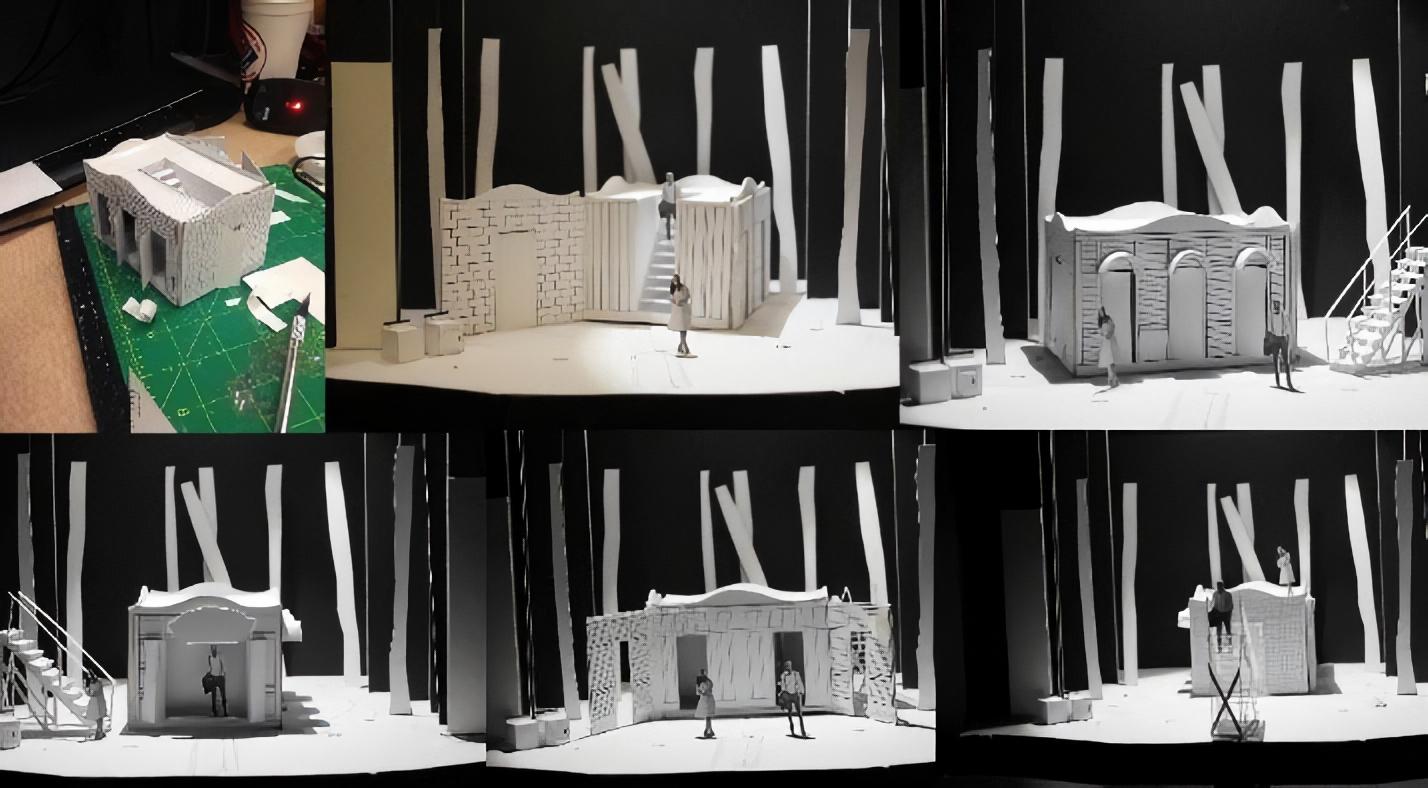
Initial white model showing various configurations of the wagon.
“Above all else, the idea of Transformation drove the scenic design of this production. Love has a tremendous power to transform. To love and to be loved irrevocably changes a person. In the same way, telling a tale affects a both the listener and the storyteller.”
– Excerpt from designer notes
This shows various configurations of the wagon during the white model phase. In our preliminary designs, there was an exterior staircase that could be used for some unique stage pictures. Ultimately, this was cut for cost and for consolidation of elements.
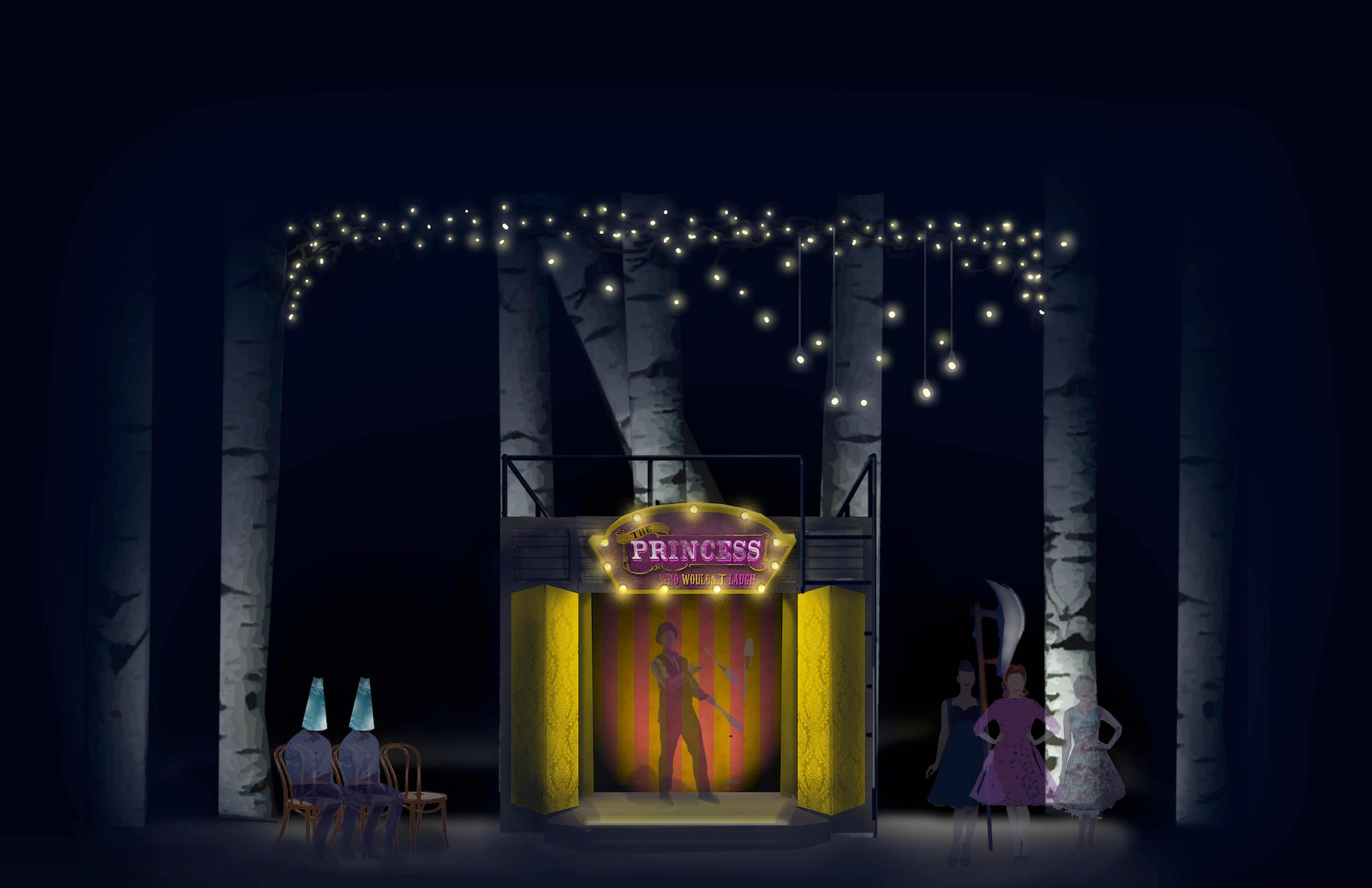
The first image I produced that illustrated the final look. Ultimately, I went more toward a circus aesthetic than my initial idea of a NYC brick comedy club.
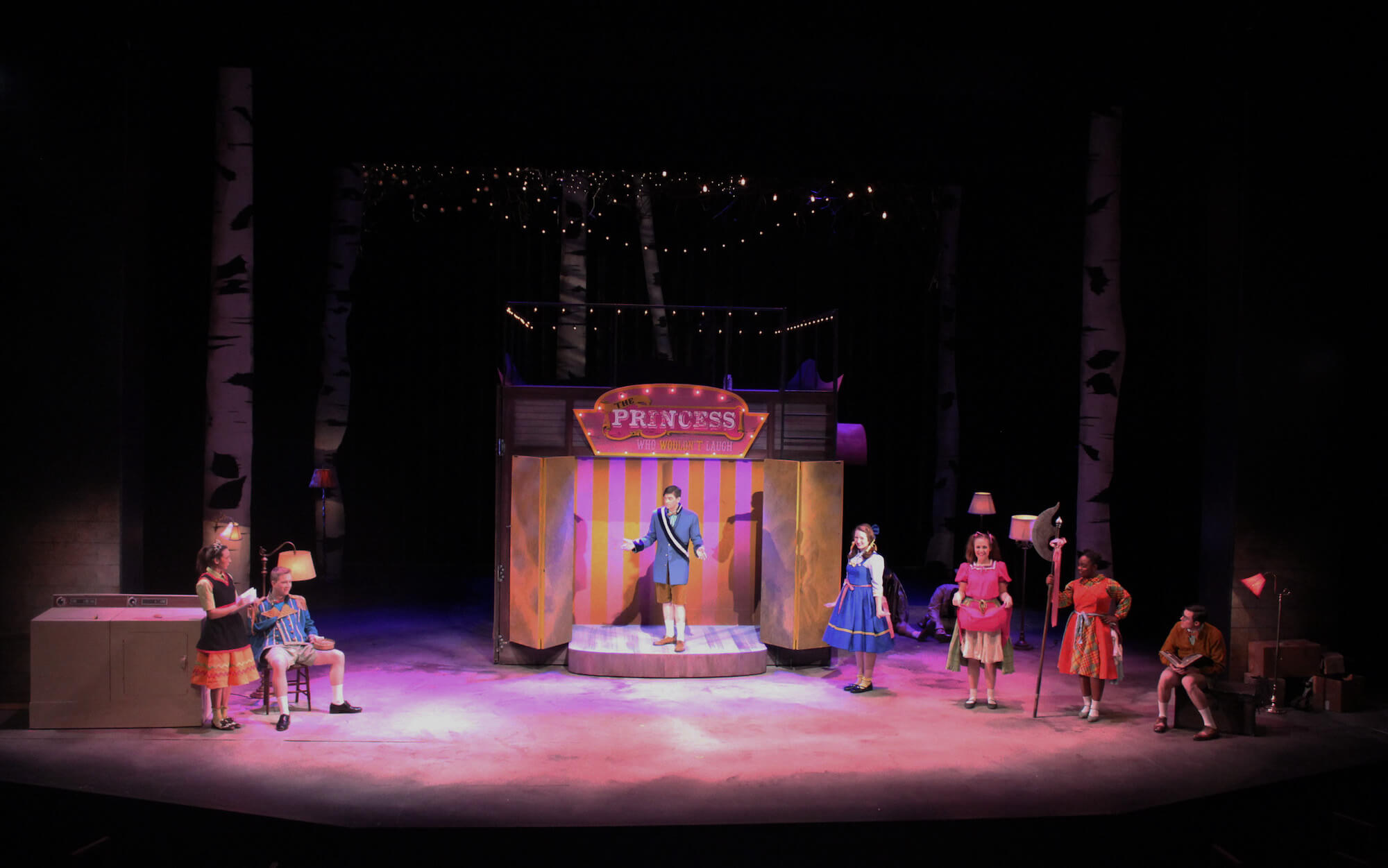
The first image I produced that illustrated the final look. Ultimately, I went more toward a circus aesthetic than my initial idea of a NYC brick comedy club.
Refining The Look
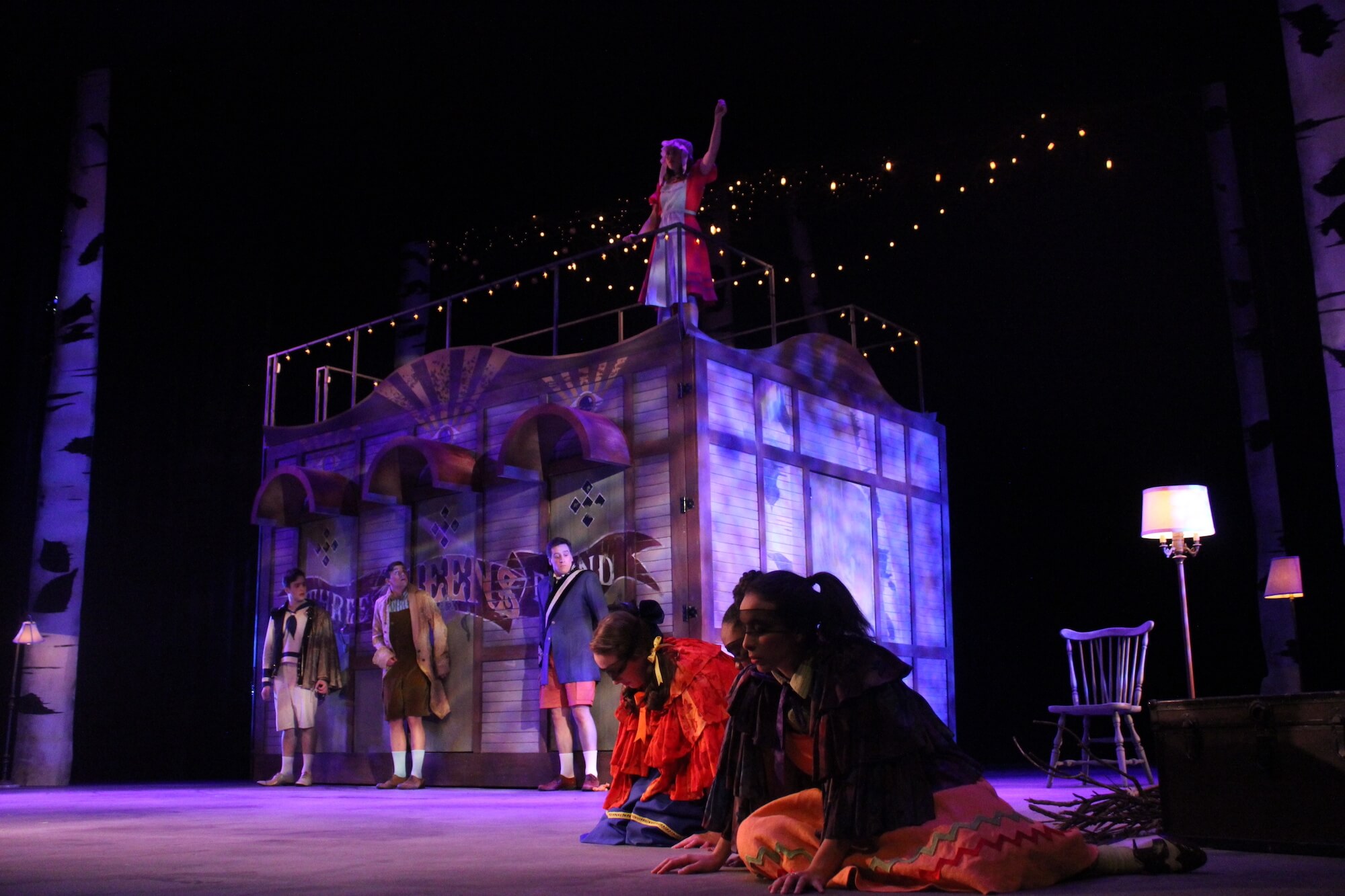
Three Blind Queens was the end result of the first transition. As such it needed to establish both the convention of using the story’s title, and emphasize that this side of the wagon had been designed to tell this specific story.
This production photo illustrates the intentionality of Three Blind Queens. Three doorways, the looming presence of the stepmother above, and a motif of eyes throughout the design.
Allerleira appears to be a typical turn of the wagon, but ends utilizing one of the more dramatic transformations The exterior walls open up and we end up seeing into the wagon where we see Allerleira’s apartment.

Model of ‘Three Blind Queens’

Model for ‘Allerleira’ Exterior

Model of ‘Allerleira’ interior
